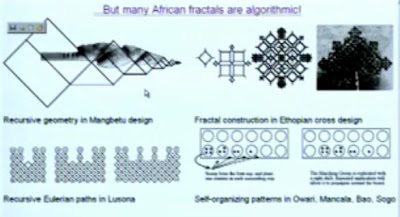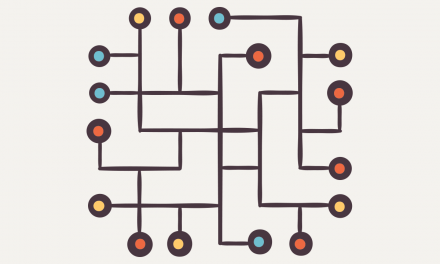Ron Eglash has a wonderful newly posted Ted Talk on Fractals, he discusses:
- Cantor sets
- Helge von Koch’s variation on Cantor sets
- Self-similar structures in nature
- Royal insignia (rectangles within rectangles)
- African village which is a ring of rings
- Circular and four-fold symmetry use in different cultures
- Algorithms and the relationship to learning stories

- Optimization for building african wind fences
- Bamana sand divination (random number generator from the 12th century)
- Every digital circuit in the world began in Africa… you’ll have to watch to see the reasoning
- Usefulness of using heritage-oriented mathematics to motivate minority students to learn mathematics
- Self-organization is in the brain, the Google search engine, and why the AIDS virus is spreading… the African methods of self-organization are robust, well-established and should be studied
Eglash’s website, Culturally Situated Design Tools, contains programs and applets that highlight cultural heritage. There are LOTS of geometry references on the website, including several cultural references to Cartesian coordinates (navajo rug weaver, graffit grapher, etc.) for those of you teaching algebra.
You could easily show this video in your class if you are teaching something where it might be appropriate. Total running time is 17 minutes. If you go to the TedTalks website for this one, you can download the whole video (in case you don’t have Internet in your classroom).
I think it would take a little while to work your way through all the material on the Culturally Situated Design Tools website, but if you teach in a school with a large minority population, I can see how it might definitely be a worthwhile way to spend some time.



